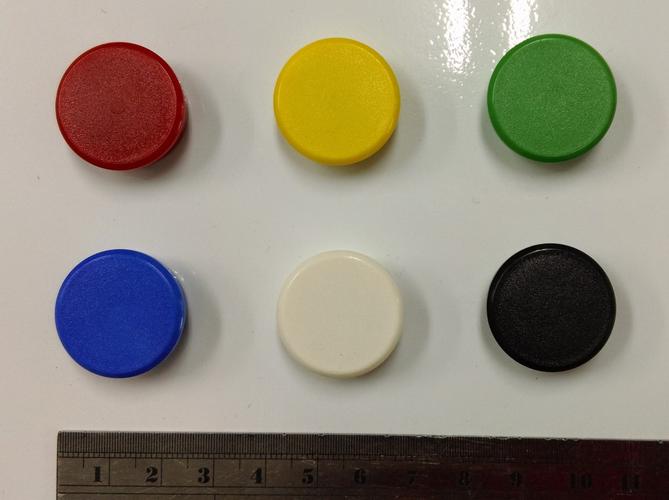Types of Permanent Magnet Materials
At present, the common permanent magnetic materials are ferrite, NdFeB, samarium cobalt, aluminum nickel cobalt, rubber magnetism, and so on.

Each of the above magnets has its own characteristics and different application fields. The following are briefly introduced:
Ferrite magnet
Ferrite is a non-metallic magnetic material, also known as magnetic ceramics. We take apart the traditional radio. The horn magnet inside is ferrite. At present, the magnetic energy product of ferrite is only slightly higher than that of 4MGOe. One of the greatest advantages of this material is its low price. At present, it is still widely used in many fields. Ferrites are ceramics. Therefore, the machinability is similar to that of ceramics.
Ferrite magnets are molded and sintered. If processing is needed, only simple grinding is needed. Because it is difficult to machine, most ferrite products are simple in shape and large in size tolerance. The square shape product is good and can be ground. Other dimensional tolerances are given as a percentage of nominal size. Because ferrite is widely used and inexpensive, many manufacturers will have ready-made circular rings of conventional shapes and sizes, such as diamonds and other products to choose from. Because ferrite is made of ceramics, there is basically no corrosion problem. The finished product does not need surface treatment or coating such as electroplating.
Rubber coated magnet
The rubber magnet is one of the series of ferrite magnets. It is made of bonded ferrite magnetic powder and synthetic rubber by extrusion, calendering, and injection molding. It can be processed into strips, rolls, sheets, blocks, rings, and various complex shapes. Its magnetic energy product ranges from 0.60 to 1.50 MGOe in the application fields of rubber magnets: refrigerators, message boards, fasteners that fix objects to metal bodies for advertising, and magnetic discs for toys, teaching instruments, switches, and sensors. Mainly used in micro and special motors, refrigerators, disinfection cabinets, kitchen cabinets, toys, stationery, advertising, and other industries.
Samarium cobalt
Samarium-cobalt magnets consist mainly of samarium and cobalt. Samarium cobalt magnets are also the most expensive of several magnets because of the high price of the two materials themselves. The magnetic energy product of a samarium-cobalt magnet can reach 30MGOe or even higher at present. In addition, samarium cobalt magnets have a high coercivity and high-temperature resistance. They can be used at 350 degrees Celsius, so they can not be replaced in many applications. Samarium cobalt magnet belongs to powder metallurgy products.
Generally, according to the size and shape of the finished product, the manufacturer sinters the block blank and then uses the diamond blade to cut into the finished product size. Because samarium cobalt is conductive, it can be processed by wire cutting.
In theory, samarium and cobalt can be cut into shapes that can be cut by wire cutting, without considering magnetization and larger size. Samarium cobalt magnet, corrosion resistance is good, generally, do not need to carry out anti-corrosion plating or coating. In addition, the texture of the samarium cobalt magnet is very brittle, so it is difficult to process small size or thin-walled products.
NdFeB
The neodymium magnet is a magnet product with wide application and rapid development. Neodymium iron boron has been widely used since its invention, and it has not been more than 20 years. Because of its high magnetic properties and processability, the price is not very high, so the application field expands rapidly. At present, the magnetic energy product of commercialized NdFeB can reach 50MGOe, which is 10 times that of ferrite.
NdFeB is also a powder metallurgical product, and its processing method is similar to that of SmCo. At present, the highest working temperature of NdFeB is about 180 degrees Celsius. If it is used in harsh environments, it is generally recommended not to exceed 140 degrees Celsius.
NdFeB is very susceptible to corrosion. Therefore, most of the finished products need to be electroplated or coated. Conventional surface treatments include nickel plating, zinc plating, aluminum plating, electrophoresis, etc. If working in a closed environment, phosphating can also be used. Because of the high magnetic properties of NdFeB, NdFeB has been used to replace other magnetic materials on many occasions to reduce the volume of products. If we use ferrite magnets, the size of mobile phones today will not be less than half a brick.
Samarium cobalt magnet and neodymium iron boron magnet have better processing performance. Therefore, the dimension tolerance of the product is much better than that of ferrite. General products, size tolerance can be achieved (+/-) 0.05 mm.
AlNiCo
Aluminum-nickel-cobalt magnet has two processes: casting and sintering. AlNiCo magnets have a magnetic energy product of up to 9MGOe, which has the greatest characteristic of high-temperature resistance and working temperature of 550 degrees Celsius. However, Al-Ni-Co is very easy to demagnetize in the reverse magnetic field. If you push two poles of Al, Ni, and Co together, the magnetic field of one of the magnets will be withdrawn or reversed. Therefore, it is not suitable to work in the reverse magnetic field (such as magnet rotor). Aluminum, nickel, and cobalt have high hardness. Although they can be ground and cut by wire, they are expensive. Generally supplied products, there are two kinds of ground or non-grinded. Aluminum, nickel, and cobalt are widely used in the sensor field.